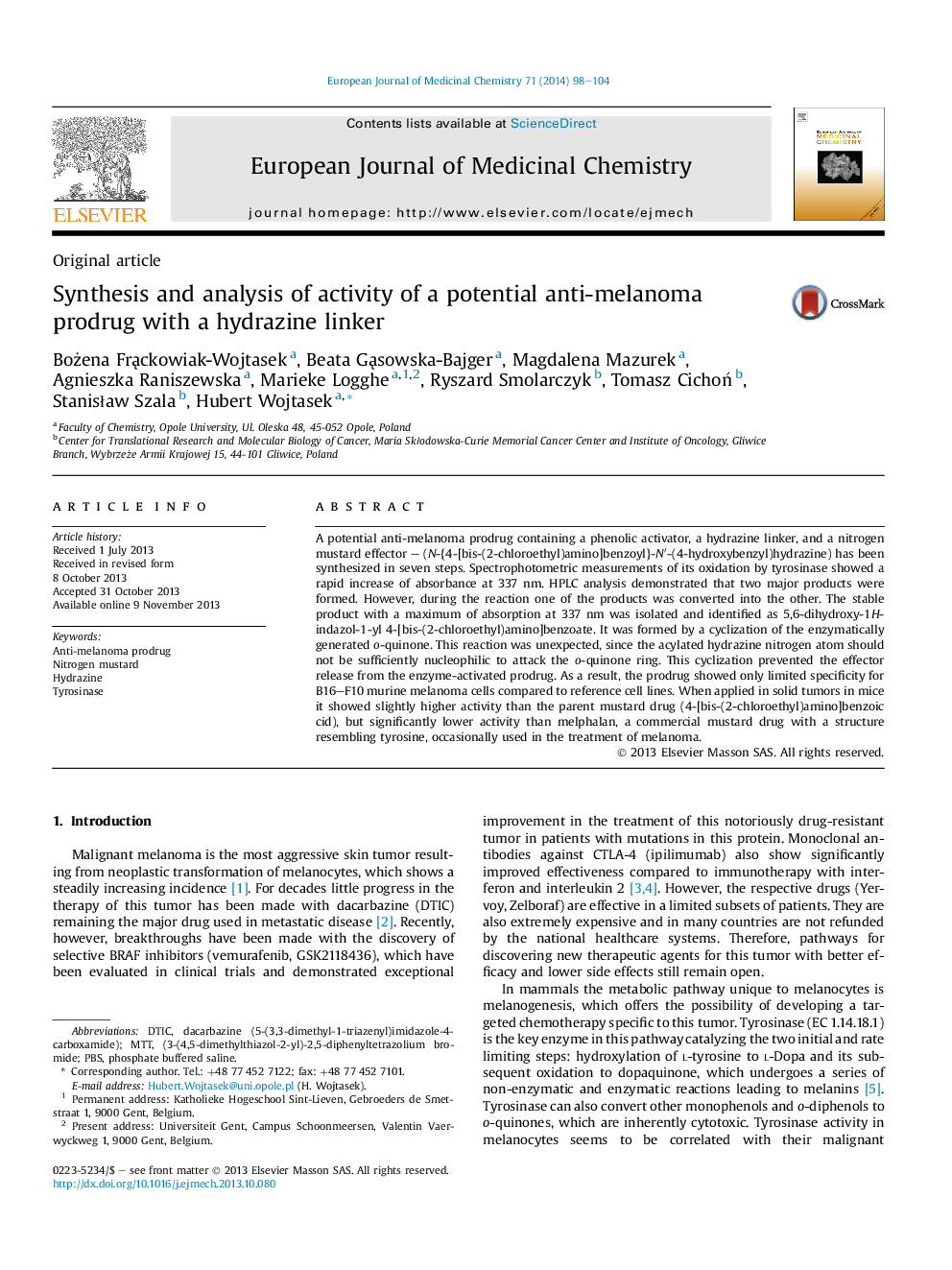| Article ID | Journal | Published Year | Pages | File Type |
|---|---|---|---|---|
| 1392585 | European Journal of Medicinal Chemistry | 2014 | 7 Pages |
•The first anti-melanoma prodrug with a hydrazine linker has been synthesized.•Products of its oxidation by tyrosinase have been identified.•The activity of the prodrug against melanoma was evaluated in vitro and in vivo.•The activity was not significantly better than for the parent mustard drug.
A potential anti-melanoma prodrug containing a phenolic activator, a hydrazine linker, and a nitrogen mustard effector – (N-{4-[bis-(2-chloroethyl)amino]benzoyl}-N′-(4-hydroxybenzyl)hydrazine) has been synthesized in seven steps. Spectrophotometric measurements of its oxidation by tyrosinase showed a rapid increase of absorbance at 337 nm. HPLC analysis demonstrated that two major products were formed. However, during the reaction one of the products was converted into the other. The stable product with a maximum of absorption at 337 nm was isolated and identified as 5,6-dihydroxy-1H-indazol-1-yl 4-[bis-(2-chloroethyl)amino]benzoate. It was formed by a cyclization of the enzymatically generated o-quinone. This reaction was unexpected, since the acylated hydrazine nitrogen atom should not be sufficiently nucleophilic to attack the o-quinone ring. This cyclization prevented the effector release from the enzyme-activated prodrug. As a result, the prodrug showed only limited specificity for B16–F10 murine melanoma cells compared to reference cell lines. When applied in solid tumors in mice it showed slightly higher activity than the parent mustard drug (4-[bis-(2-chloroethyl)amino]benzoic cid), but significantly lower activity than melphalan, a commercial mustard drug with a structure resembling tyrosine, occasionally used in the treatment of melanoma.
Graphical abstractFigure optionsDownload full-size imageDownload as PowerPoint slide
